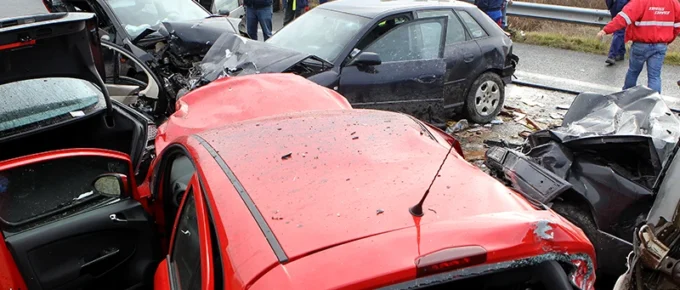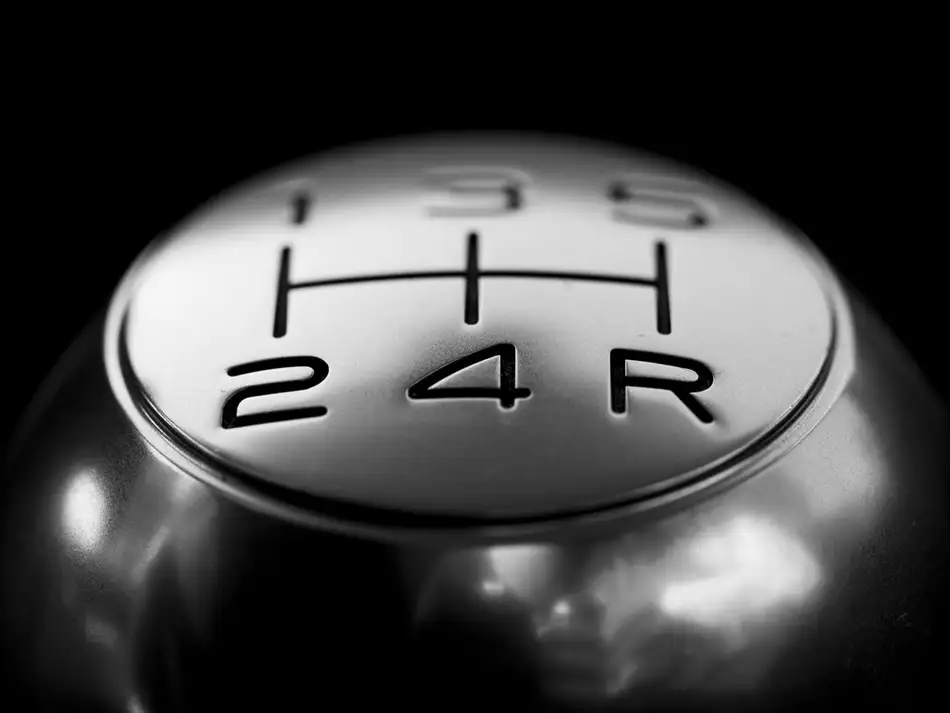
Learn how fault works in multi-vehicle accidents in Miami so you can recover maximum compensation for your claim.
Pileup crashes in Miami pose a significant risk to drivers on the roads, often leading to severe injuries, extensive property damage, and complex legal battles over liability and compensation.
The chaotic nature of these multi-vehicle accidents complicates the process of determining fault and can leave victims facing an uphill battle as they seek justice and financial recovery for their losses, making it crucial that they understand their rights.
At Redondo Law, Miami accident attorney Mike Redondo is dedicated to advocating for accident victims, leveraging his expertise to ensure they receive the compensation they deserve.
If you have questions about your rights after a multi-vehicle crash in Miami or want assistance filing a claim, reach out to Redondo Law to schedule a free consultation.
What makes multi-car crashes more dangerous than crashes involving only 2 vehicles?
Multi-car crashes, also known as pileups, are often more dangerous than collisions involving just 2 vehicles for several reasons:
- Increased severity of injuries. With multiple vehicles involved, the force of impact is often compounded, leading to more severe injuries. Vehicles can be hit multiple times from different angles, increasing the risk of serious harm to occupants.
- Higher risk of fatalities. The complexity and scale of multi-car crashes significantly raise the likelihood of fatalities. The chaotic nature of these accidents means that safety features in vehicles, like airbags and crumple zones, might not be as effective in preventing fatalities due to multiple impacts.
- Difficulty in evacuating. In pileups, vehicles can become entangled or blocked by wreckage, making it difficult for occupants to exit their cars. This can be particularly dangerous if there are fires or if occupants are in need of immediate medical attention.
- Increased complexity in emergency response. The scale of multi-car pileups complicates the response of emergency services. Identifying and reaching injured parties is more challenging, and the risk of additional collisions increases as responders attempt to secure the scene.
- Secondary accidents. Multi-car pileups can cause secondary accidents as other drivers become distracted by the scene or attempt to navigate around the crash site. These secondary accidents can further complicate the emergency response and increase the overall danger of the situation.
Given these factors, multi-car crashes are not only more dangerous in terms of immediate physical harm but also in their broader impact on emergency response and legal proceedings that follow.
Florida pileup crash victim awarded $411 million in damages
On July 24, 2018, a catastrophic pileup involving over 45 vehicles occurred on I-10, resulting in more than 18 accidents and leaving a motorcyclist, Duane Washington, critically injured and virtually paralyzed.
Washington’s lawsuit against Top Auto Express Trucking Company concluded in Florida’s Second Circuit Court through the state’s first virtual trial, awarding him over $411 million in damages. This verdict represents one of the largest damages awarded in a Zoom trial in the United States this year.
Washington, a decorated veteran from Quincy, Florida, experienced life-altering injuries that night. The accident occurred during heavy rain, leading to a semi-truck jackknifing and causing a domino effect of crashes. Washington was attempting to avoid the collision when he was launched into the median after crashing into a pickup truck.
Top Auto Trucking Company, implicated for failing to adhere to safety laws, did not respond to inquiries, and their attorney withdrew from the case months before the trial. The Florida Highway Patrol has closed all investigations related to the crashes, and Washington continues to undergo treatment and therapy in Gadsden County.
Which is a common cause of multi-vehicle crashes?
Multi-vehicle crashes are typically the result of a phenomenon known as a chain reaction. A chain reaction crash typically starts with a single collision that prompts subsequent crashes as other vehicles are unable to stop or avoid the initial accident site.
This can happen quickly, especially on roadways like highways and expressways where vehicles are traveling at high speeds and the reaction time to slow down or maneuver away from the hazard is significantly reduced.
Contributing factors that often lead to multi-vehicle crashes include the following:
- Distracted driving. Drivers who are not fully attentive to the road can easily become part of a chain reaction if they fail to notice slowed or stopped traffic in time.
- Drunk driving. Driving under the influence of alcohol or drugs increases the chance of mistakes on the road and slows response time, making drunk drivers more likely to cause or contribute to multi-vehicle accidents.
- Tailgating. Following too closely doesn’t allow sufficient stopping distance if the lead vehicle brakes suddenly, increasing the likelihood of a multi-vehicle pileup.
- Speeding. Excessive speed reduces the available time to react to slowing traffic or hazards on the road, contributing to the severity and likelihood of multi-vehicle accidents.
- Adverse weather conditions. Slippery road conditions due to ice, snow or rain can lead to a loss of vehicle control, making it difficult for drivers to stop or avoid collisions.
- Sudden stops. Abrupt braking or brake-checking, especially on busy roads, can cause a ripple effect, with following vehicles unable to stop in time, leading to multiple rear-end collisions.
Addressing common risk factors like speeding and distracted driving isn’t just about avoiding pile-up accidents, it’s about protecting ourselves and others from the unpredictable spectrum of car crash injuries.
From minor fender benders to life-altering spinal cord damage, every collision carries the potential for devastating consequences. By taking steps to mitigate these risks, we can significantly reduce the chances of experiencing that uncertainty and keep our roads safer for everyone.
Who pays for a multi-car accident in Florida?
In Florida, the at-fault driver (or drivers) pays for everyone’s damages in a pileup accident, but determining who’s at-fault in a multi-car accident involves navigating the state’s specific insurance laws and regulations. Florida is a no-fault insurance state, which impacts how damages are covered after such accidents.
Here’s how it typically works:
- Personal injury protection (PIP) coverage. Under Florida’s no-fault system, every motorist is required to carry PIP insurance. After an accident, regardless of who is at fault, a driver’s own PIP coverage pays for their medical expenses and certain other losses, such as lost wages, up to the limits of their policy (typically up to $10,000). PIP coverage is designed to reduce the need for drivers to sue each other for compensation for minor injuries.
- Property damage liability (PDL) coverage. Florida drivers are also required to have PDL coverage, which pays for damage to another person’s property (such as their car) in an accident where you’re at fault. The minimum required coverage is $10,000.
- Bodily injury liability (BIL) insurance. Although BIL insurance, which covers serious injuries or death you may cause to others in an accident, is not mandatory in Florida, it’s highly recommended. If you have BIL coverage and are found at fault in a multi-car accident, your insurer may pay for the other parties’ medical expenses exceeding their PIP coverage, up to your BIL limits.
- Determining fault. In multi-car accidents, determining fault can be complex. Florida follows a comparative negligence system, where each party involved can be found partially at fault and damages are allocated accordingly. If multiple drivers share fault, each driver’s insurance may end up paying a portion of the total damages, proportional to their degree of fault.
- Uninsured and underinsured motorist coverage. This optional coverage protects you if you’re involved in an accident with a driver who does not have sufficient insurance to cover your damages or who is completely uninsured. It can cover expenses not covered by PIP or when damages exceed the at-fault party’s ability to pay.
- Legal action. In cases of serious injury that exceed the PIP coverage limits, you may sue the at-fault driver(s) for additional compensation. The outcome of such lawsuits can further determine who pays for what portion of the damages.
In summary, in Florida, your own insurance initially covers your injuries through PIP, regardless of fault. Property damage and injuries to others may be covered by the at-fault party’s PDL and BIL insurance, respectively. However, in multi-car accidents, fault can be shared among several drivers, potentially complicating the process of determining who pays for what.
Learn how Florida insurance coverage works so you understand your rights after a car crash.
How is fault determined in a car accident in Florida?
In Florida, fault in a car accident is determined through a legal concept known as comparative negligence, specifically a modified comparative negligence system. This approach allows the fault to be shared among all parties involved in an accident, with each party being assigned a percentage of fault based on their contribution to the accident. The compensation each party can receive for damages is then reduced by their percentage of fault.
So, if an individual is found partially at fault for an accident, they can still recover damages. However, the amount of compensation they’re entitled to will be reduced by their percentage of fault. This system ensures that parties are held responsible only for their share of the fault in causing the accident. However, anyone found to be more than 50% at fault for an accident is prohibited from recovering any compensation.
Here’s an example of how modified comparative negligence might work in a pileup crash:
Let’s consider a complicated multi-vehicle pileup on Interstate 95 involving 4 cars. After an investigation and possibly a court ruling, it’s determined that:
- Car A caused the initial accident by abruptly stopping on the highway due to distracted driving, being assigned 40% of the fault.
- Car B, speeding and following too closely behind Car A and unable to stop in time, crashes into Car A. Car B is found to be 30% at fault for tailgating and speeding.
- Car C, also following too closely, crashes into Car B, receiving 20% of the fault.
- Car D, while attempting to avoid the pileup, sideswipes Car C, contributing to the chaos but doing so in a panic to avoid worse consequences. Car D is assigned 10% of the fault.
If the total damages from the crash amounted to $100,000, and each driver suffered damages, their ability to recover compensation would be adjusted by their fault percentage. For instance:
- The driver of Car A could claim damages but would only be eligible to receive 60% of their total damages, reflecting their 40% fault.
- The driver of Car B could recover 70% of their damages, Car C 80%, and Car D 90%.
This example illustrates how Florida’s comparative negligence system allows for fault to be apportioned among multiple parties in a complex accident, impacting the compensation each can recover. It’s a fair approach that acknowledges the complexities of real-world accidents, ensuring that each party’s responsibility is considered in determining the outcome of claims and lawsuits.
Because determining fault is often much more complicated in crashes involving more than 2 cars, it’s crucial to seek the help of an experienced car accident attorney as early on in the process as possible to minimize your liability and protect your right to compensation.
How much can someone sue for a car accident in Florida?
In Florida, the amount one can sue for after a car accident varies based on the injuries and losses incurred. Damages fall into 3 main categories:
- Economic damages. Cover quantifiable losses like medical expenses, lost wages, loss of earning capacity, and property damage.
- Non-economic damages. Address subjective losses such as pain and suffering, loss of enjoyment of life, emotional distress, and loss of consortium.
- Punitive damages. Aimed at punishing the at-fault party for egregious behavior, though not awarded in every case.
The exact amount one can sue for depends on specific accident details and the extent of the damages. Typically, in cases of catastrophic injuries or permanent impairment, both economic and non-economic damages are substantially higher than in accidents in which the injured party makes a full recovery.
To ensure you have a thorough understanding of the compensation you should be entitled to after an accident in Florida, be sure to seek the advice of a personal injury attorney who can provide an accurate estimate.
Looking for the best Miami car accident attorney after a pileup crash?
Navigating the aftermath of a multi-car crash, especially one involving uninsured or underinsured drivers, underscores the importance of expert legal representation. Miami car accident attorney Mike Redondo brings a deep understanding of personal injury law to the table, with a particular emphasis on complex multi-vehicle accident cases.
His commitment to justice and full compensation for victims is unwavering, focusing on recovering the fullest financial support for medical expenses, lost wages and the emotional distress caused by the accident.
With valuable experience gained from his early years working within the insurance industry, Mike Redondo possesses unique insights that he aptly applies to benefit his clients, ensuring they achieve the maximum possible settlement.
To take the first step toward securing the compensation you deserve, schedule your free consultation with Redondo Law by filling out the form below.


